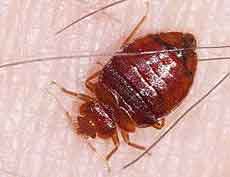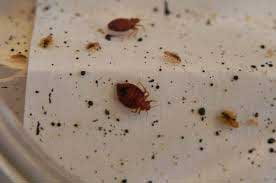
A good understanding of how bed bugs behave can help you get a clear Idea on how you can eliminate them before the infestation develops into something massive. You need to know how they feed, live, and reproduce. By understanding bed bug behavior and habits you can be more aware of what to look for in your home.
Feeding
- Bed bugs are nocturnal insects; they mainly fed at night.
- Although they essentially feed on humans, they also feed on furry pets and other mammals.
- They can move up to 20 feet from their harborage to feed
- Depending on the conditions, bed bugs can also feed during the day.
- Feeding time is usually 3-12 minutes
- Fecal stains and dark spots found on sheets are often the past blood meals the bed bugs consumed.
Mating/Life Stages
- The life cycle of the bed bug is broken down into 3 stages; Eggs, nymphs, and adults.
- 5 sub-stages characterize the nymph stage.
- They need to feed at least once before moving to the next life cycle
- As they move from one stage to another to another, they usually shed their skin.
- Male and female bed bugs have to feed at least in 14 days to mate and reproduce.
- A fertile female can lay about 5 eggs a day and up to 500 eggs in her lifetime.
Living conditions
- Bed bugs usually thrive under cool and dark temperatures. They are functional at low temperatures of 7oC (46oF).
- Bed bugs don’t do well with heat, and they can’t survive when the temperature of their body reaches 45oC (116oF).
- Bed bugs can thrive in most places as long as there is a host to feed on.




